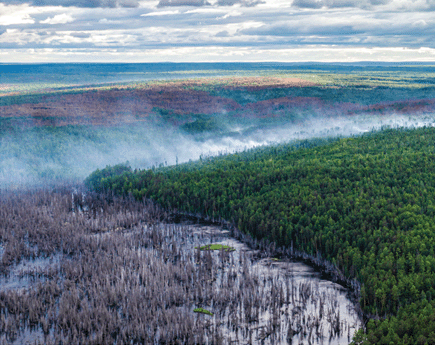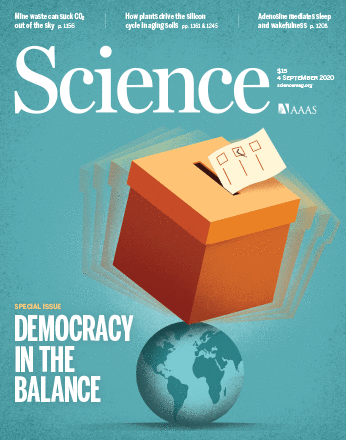In June, blistering wildfires raged within the Arctic Circle for the second successive year (1). Posing no direct threats to human life or property, Arctic wildfires are usually allowed to burn unabated. They can then smolder beneath the Arctic Circle’s blanket peat through winter and reignite during early spring when temperatures rise. Scientists attribute this year’s blazes in the northern polar region to persistent remnants of wildfires from the summer of 2019 (2). In addition to changing ecosystems within the scorched perimeter, these so-called Arctic zombie wildfires (2) amplify climate warming by releasing carbon from soil and affect human health around the planet by releasing particulates into the air (3). To address these fires and their interaction with other components of the Earth system, researchers must collect more data and update models to account for these feedbacks. It is crucial to understand what conditions cause the fires as well as the effects of the fires on the environment.

Fires burning in Siberia are transforming the landscape and contributing to climate change.
PHOTO: © JULIA PETRENKO/GREENPEACE
The growing regularity of Arctic zombie wildfires demonstrates the risks of compound climate events (4) under global warming. These wildfires shed light on the domino effects of coinciding, multiple, interdependent natural hazards (5) within the Arctic Circle, particularly extreme drought and persistent heat waves. Climatic drivers of wildfires within the Arctic Circle—including temperature (6), dry airflow (7), lightning frequency (8), and wind speed (9)—are increasing, making wildfire recurrence likely (10). Yet our knowledge about the fires is largely limited to the past 2 years (3). We lack sufficient data about the location and size of roasting areas, the amount of atmospheric heat-trapping greenhouse gas (CO2 and CH4) emissions, the paths of the smoke plumes, and the sites of fire-related black carbon deposition (3).
To better understand and manage these fires, researchers should comprehensively assess the cascading risks (4) that lead to their ignition and endurance, such as soot impacts on snow and ice covers. Theoretical wildfire models should be updated to explain swelling Arctic blazes and consider changes in their environmental drivers (such as peat fuel) and climatic drivers (such as extreme winds). Researchers should identify and assess both direct and indirect environmental and socioeconomic impacts of the fires and determine the global challenges for humanity that are likely to result, including the future climate risk that compound events related to the fires could induce. Immediate actions and sustained efforts at national and international scales are needed to mitigate Arctic zombie wildfires through global multidisciplinary collaboration.


